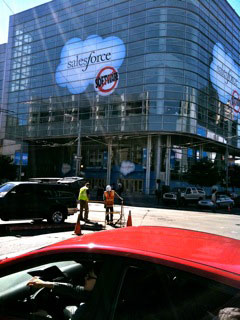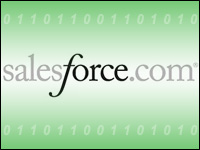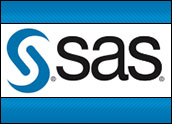

There was brisk business in associated user group meetings in San Francisco before Dreamforce. For some reason, I don’t understand why Dreamforce starts in the middle of the week this year, which is fortunate for two reasons: Hurricane Irene clobbered travel operations up and down the East Coast over the weekend, and given the number of users coming from the east, it was fortunate. Many people were able to reschedule flights, though some inevitably missed being at Dreamforce this year.
Salesforce is predicting 40,000 people will be in attendance, and many Salesforce partners have taken advantage of the fact that their mutual customers are in town. I’ve been to user meetings with Cloud9 and Zuora (more in a moment), and Marketo and WorkDay are also hosting events. Alas, there is only so much time, and this week it seems like there is much greater demand than can be accommodated.
Ailing ERP
Cloud9 introduced new functionality for its sales forecasting system, and Zuora told its customers about its product roadmap for the next year. Zuora seems like CEO Tien Tzuo is trying to outpace alma mater Salesforce in his growth rate. He announced enhancements to ZBilling and ZPayments, as well as ZForce, their integration platform.
Most importantly, Tzuo told his audience two things: First, he’s out to provide a complete end-to-end functionality for revenue and finance so that customers can manage all their revenue and profits from his product.
Second, and definitely most controversial, Tzuo told his audience that ERP was, if not dead, then dying. His logic makes a lot of sense. Zuora is not about simply building another billing system. It’s a company focused on supporting the Subscription Economy. By Zuora’s definition, the economy is rapidly moving from a 20th century manufacturing paradigm to one where we all sell services in one form or another.
Now, ERP is the billing and accounting model for the manufacturing paradigm. That paradigm requires a billing and revenue recognition automation suite that supports one-time sales of products. That model gets creamed in the subscription world, where vendors have to be prepared to change configurations and one-time deliverables with every invoice. Most subscription vendors long ago figured out that old ERP would do the job for them and either built their own systems or bought into Zuora or one of its competitors. So the prediction that ERP is dead refers to the idea that as we transition from manufacturing to subscriptions, ERP will have a decreasing workload.
I am generally in agreement.
The Social Enterprise
ERP might not be the only thing to go away due to the subscription economy. Much of the ERP argument can be applied with variation to CRM. It’s not subscriptions per se that are causing CRM to change, but what supports subscriptions — the Internet. More specificall,y the social revolution that started on the Net.
In San Francisco this week, Salesforce is pushing hard on its newest idea, the social enterprise, which dovetails nicely with the social customer. Social has changed CRM beyond recognition over what it was like just 10 years ago. Subscription CRM also gave us the first valuable mashups, SaaS, open APIs and a lot more. All of this innovation is having a cumulative effect on CRM.
CRM first got started as a way for vendors to bring together front-office applications for sales and service because they were big and hard to integrate. That’s all done, and the availability of good, fast and cheap ways to bring applications together has given us a plethora of CRM specializations that customers are able to pull together themselves — without IT help.
So, as I think I see it, CRM will not go away, but it has already morphed so much that it really is becoming something else. Social? Yes. The idea that organizations and customers are adapting and adopting says a lot, and we probably need a new moniker, not for the sake of having something new but to better describe what it does. I am not sure that SocialCRM does it. Social as a descriptor was important, but I am not sure it is any more.
If you look at what Salesforce is talking about, it’s collaboration — not just inside the organization, but also to better support the dialog between the vendor and the customer. Perhaps the last silos to be broken down are the two labeled “Customer” and “Vendor.” Once that’s done, I think we need to look for a new moniker. Just sayin’.

























































I thoroughly agree Denis where you say – the last silos to be broken down are the two labeled "Customer" and "Vendor" … in this context, will bring into discussion the views of two of my colleagues blogs on
1) How to ‘friend’ your customer @ http://bit.ly/lUQ7yB
and
2) Also would highlight how the Saleforce strategies at Dreamforce look at next generation enterprise @ http://bit.ly/qV2RfT
Thanks,
Bappaditya,
Marketing, Infosys.